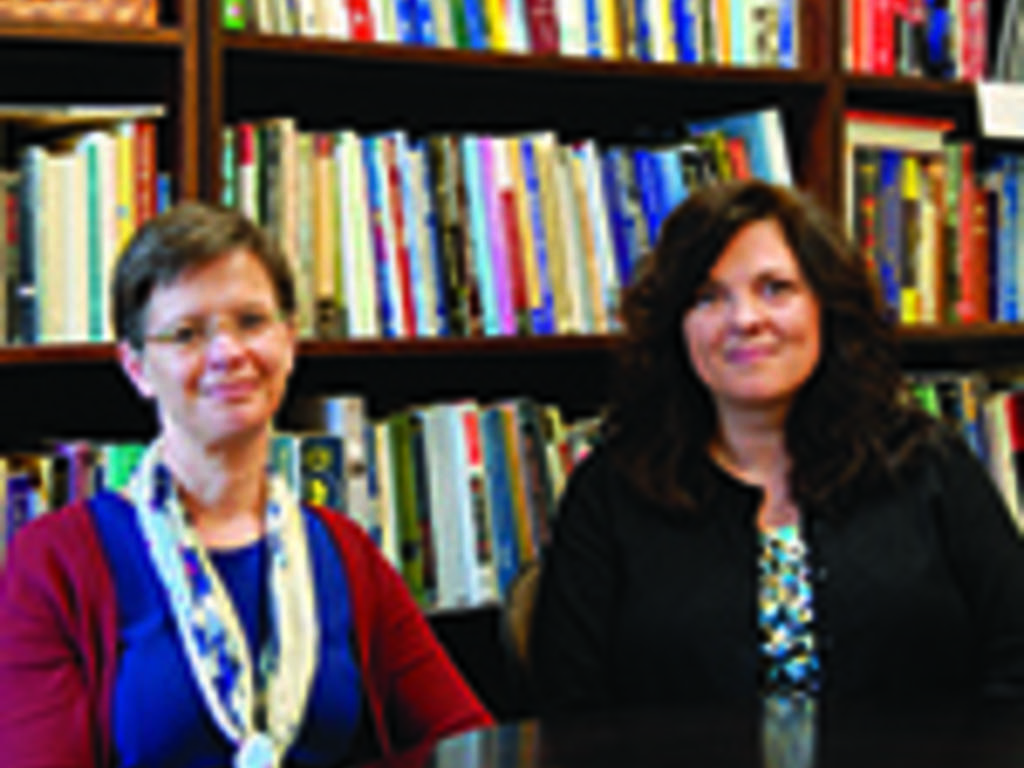By Richard J. Alley
The theory that public health might be altered for better or worse by a city’s design is a radical one, yet one being developed through the collaborative efforts of Dr. Elizabeth Thomas, Plough professor of urban studies and director of urban studies, and Dr. Kendra Hotz, assistant professor of religious studies and coordinator of the urban and community health concentration. Fall semester the two taught separate classes that cross-enrolled their students as part of the new concentration.
“Our linked courses helped to launch the new concentration in urban and community health,” explains Thomas. “Enrolled in both classes, 20 students participated in our learning community. My class met at 11 a.m., then we broke for a brief lunch, and Kendra’s class met at 12:30 p.m. So every Tuesday and Thursday, the students were together for three hours.”
The classes were designed together and “created moments in the beginning and throughout where we had shared meetings and some shared assignments. There was a sense they weren’t just two separate courses that just happened to be back to back—they really were integrated,” says Hotz.
Hotz and her focus on community health precipitated the linking of the two courses to look at the “social determinates of health,” she says. “When most people think of health, they automatically think of medicine, but one of the things we know is that clinical encounters only account for a very small percentage of what affects a person’s total health.”
Most of those determinates have to do with life circumstances, such as the neighborhood one grows up in, ease of commuting and exercise, a convenient grocery store, adequate green space, and the amount of violence—all issues of urban studies.
“We’re really uniquely situated as a liberal arts college in the heart of a city, so it’s a perfect place for doing urban studies,” Thomas says. Unique as well is the campus’ proximity to emerging, revitalized neighborhoods, such as Crosstown and the Broad Avenue Arts District in Binghampton.
Gizman Abdijabar ’16 is an urban studies major on a pre-med track. The linked classes begun last fall seemed to be designed just for her. At first, she says, she viewed them as two separate courses, but by having the same students stay together for both classes and the same concepts touched on in both hours, things started to overlap and click. “Everyone in the class formed a relationship, and it was easier to have a conversation with people who understand what you’re talking about because they’ve been going through the same urban studies course and Faith, Health and Justice course in religious studies,” she says.
“After I understood that the courses were going to be centered in Memphis, which is where I’ve grown up for the last 10 years, I was interested in learning more about the city and the people, how all of the social aspects of Memphis affect their health,” Abdijabar said.
Indeed, the collaborative class wasn’t simply texts and lectures. Thomas and Hotz sent their students into the streets to see the types of neighborhoods and talk with people living in the situations being discussed. “This is one of those places where you just can’t draw a clean line between research, service, and teaching. Those things are all really melded nicely here,” Hotz says. “That’s kind of the theory that we’re working on in the urban and community health concentration, and it gets filtered through every class students take in different kinds of ways.”
Students were also required to work with a partner site for four hours per week. Abdijabar worked with the Metropolitan Inter-Faith Association (MIFA) and its Meals on Wheels program, which took her into neighborhoods and brought her face to face with people she might never have known otherwise.
The experience with the linked classes made Abdijabar want to pursue a master’s degree in public health before venturing on to medical school. “I was so excited it was even being offered. They’re honestly probably the best two classes I’ve taken at Rhodes so far.”
Perhaps best of all, the collaboration is a win-win for the professors, whose takeaway can be as uplifting and educational, it seems, as those they’re charged with teaching.
Selfishly, it’s very fun to work together,” Thomas says. “It’s very energizing to work with colleagues who are also passionate about the same issues but coming from different disciplines.”
